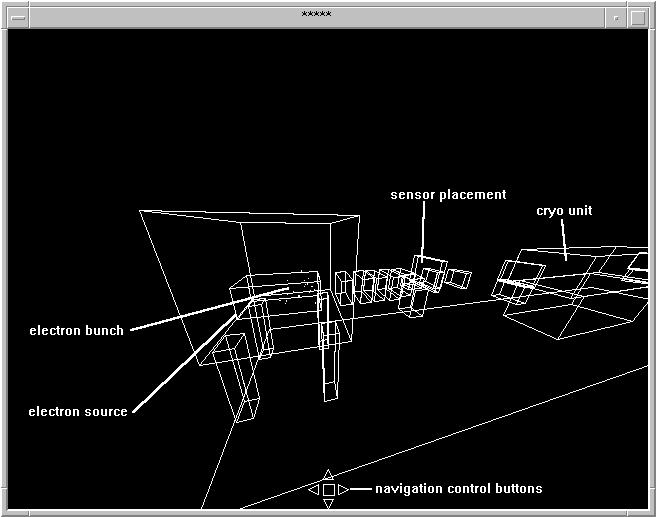A Virtual Laboratory
Brief Description
The outcome of these first lines of code was an exapmle-environment which allows scientist to
setup experiments without using any real instrument nor device. I call it the "Virtual
Laboratory". Currently a demonstration is produced which simulates an electron bunch in
a linear accelerator. For doing this experiment the scientist has to describe
- the functionality of his devices (which can/will be stored to a library for reusing)
- the geometry of the experiment
- the process itself (the simulation of the bunch)
The environment is used for
- setting up the experiment (placing the instruments and devices)
- creating the input data via interaction with the virtual instruments/devices
- running the simulation
- representing the results
- or short: doing the experiment as in real
As in real life it is possible to interact to the process any time the scientist want to.
This means he can stop the simulation any time, may alter the setup and rerun it. This may
save time if one discovers an error after half the simulation is done. It also may help to
prevent real instruments from beeing damaged.
At all the concept will be totally different to a normal simulation which is done with a
sequential/parallelized algorithm. The path I follow really starts with an independent
description of the devices, instruments and particles. The next steps explains how they interact
e.g. an accelerator tube interacts on electrons, which means it takes control over the electrons
as long as they remain inside the tube. This way no user nor any simualation needs to have any
a prioi knowledge about the experiment which will be carried out. As long as the descriptions
are not too far from reality the whole thing will be a real experiment.
State of Art
So far the worldserver, viewers and some intrinsic classes are implemented.
It currently runs on a PVM cluster of a Convex SPP/1000 Exemplar, a Convex C-3820, a C-3220,
an IBM RS6000/591 and an IBM/PC with Linux as I/O knot of the parallel virtual
machine and - if I can find a PowerGlove (A.G.E. seams to be broken).